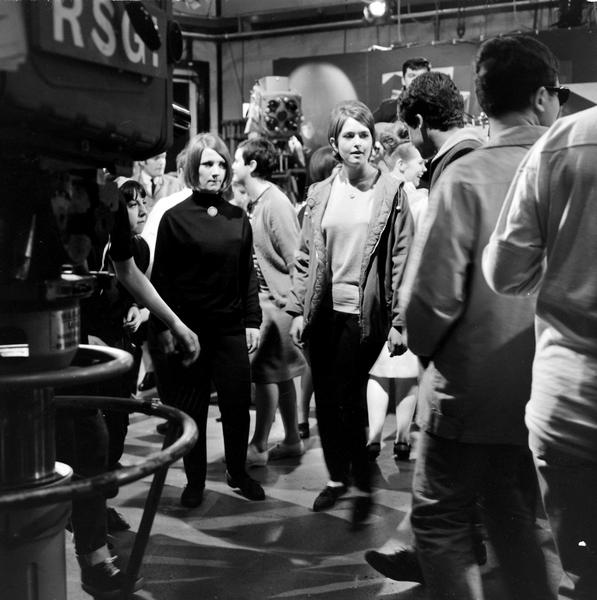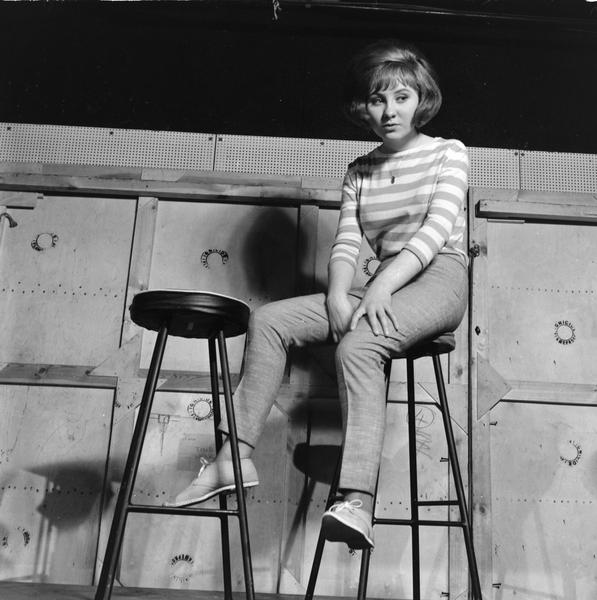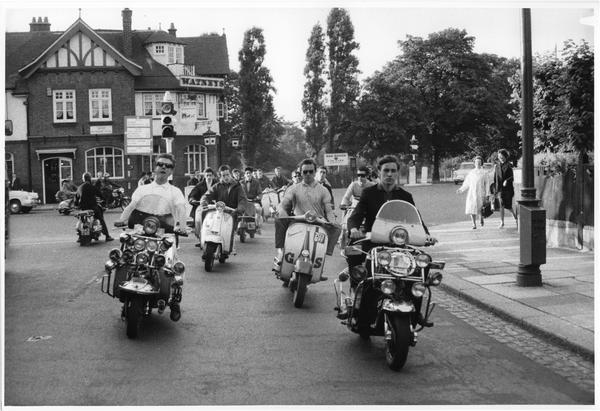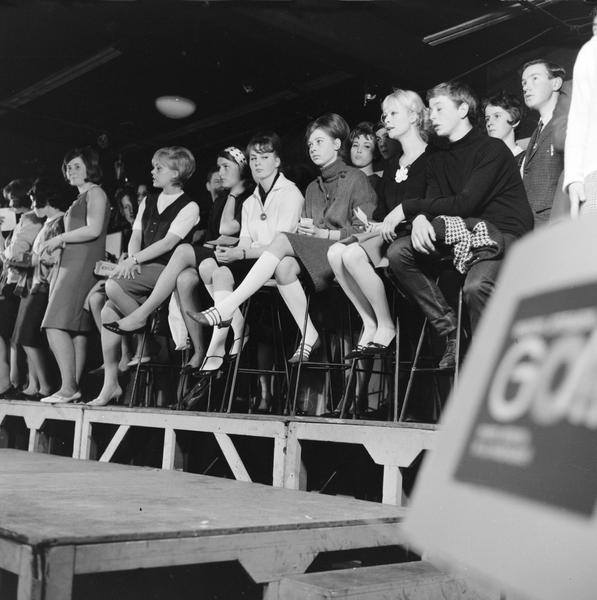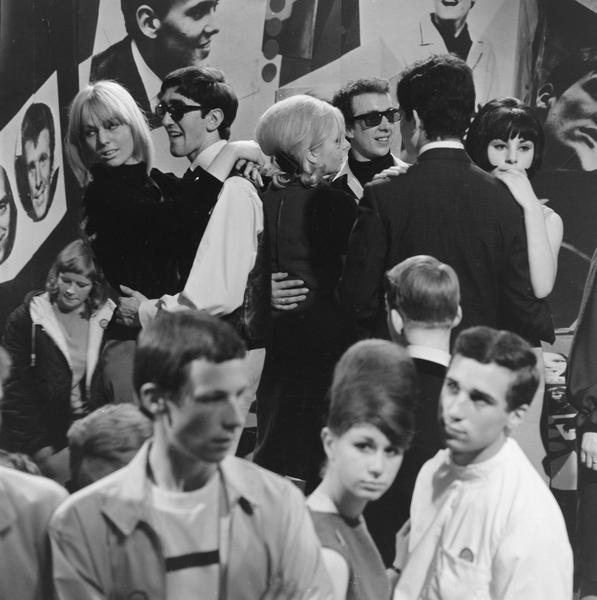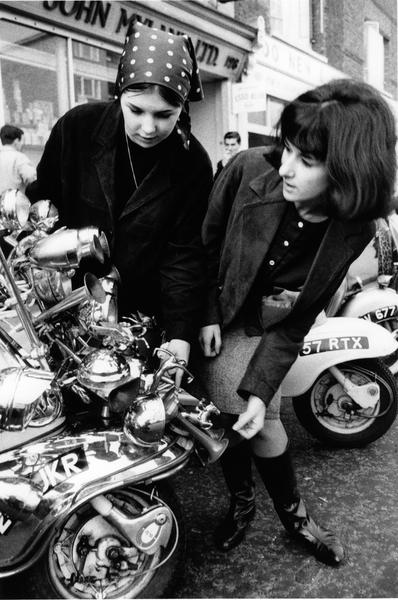Ready Steady Go!: The Swinging Sixties music show
In the mid-1960s, the sounds and styles of Swinging London were beamed into Britons’ living rooms every Friday night via ITV’s Ready Steady Go!. This pop music programme hosted hot new bands like the Beatles in its small central London studio, which was packed to the brim with a young and trendy audience. Photographer Henry Grant captured the action on set in 1964.
City of Westminster
1963–1966

Live every Friday night
Ready Steady Go! launched on Friday 9 August 1963. It was broadcast live every week at 6.08pm from Television House on Kingsway, in the West End. Artists played on mini stages closely surrounded by cameras and the audience, who were brought in to dance. Here, Grant snaps a performance by Liverpool-born pop star (and later TV presenter) Cilla Black.

Or perhaps not quite live…
Notice something a little strange about this image of English beat band Freddie and the Dreamers? Their guitars aren’t plugged into speakers. Artists mimed to their songs for around the first year of the show, before a move to a larger studio in Wembley in 1965 made performing live a requirement.

A favourite with the mods
Ready Steady Go! shone a spotlight on the styles, sounds and attitudes of the mods, a youth subculture that emerged in London in the late 1950s. The music leant on rhythm and blues, rock and roll, and beat music (a sort of combination of the two). The show was also very fashion-focused, featuring news about designers and clothes shops and interviews with the sharply-styled audience.

It was hosted by the stylish Cathy McGowan
In 1964, Cathy McGowan joined the show as a host. She was young, barely into her 20s, and styled herself in outfits from trendy boutiques like Biba, earning herself the nickname ‘Queen of the Mods’. McGowan was an influence on many of Ready Steady Go!’s teen fans. She became a star in her own right, although some mods thought she was inauthentic and wore ‘last month’s fashions’.

You had to be cool to get in
The audience was very much a part of the show. If you applied for tickets, you’d get in if you looked ‘cool’ or could dance well. Producers would also pick the crowd by going to trendy London clubs and shops on Carnaby Street. Queues to take part would stretch around the block. Inside, the show’s two resident dancers demonstrated new routines for the audience to copy.

Manfred Mann were on theme tune duties
The show churned through a few theme tunes before asking the band Manfred Mann to write one themselves. Their catchy track 5-4-3-2-1, with its energetic harmonica riffs, became the band’s breakout hit. Later, the theme tune was changed to another of the band’s songs, Hubble, Bubble, Toil and Trouble. The group were very popular with the teenagers who watched the show.

Lulu on standby
Waiting to perform here is Scottish singer Lulu, who’d released her first hit single Shout that year. The show had its finger on the pulse of many breakout acts of the 60s, hosting the Who, the Rolling Stones and Jimi Hendrix. It also showcased American soul and R&B artists like the Supremes and James Brown.
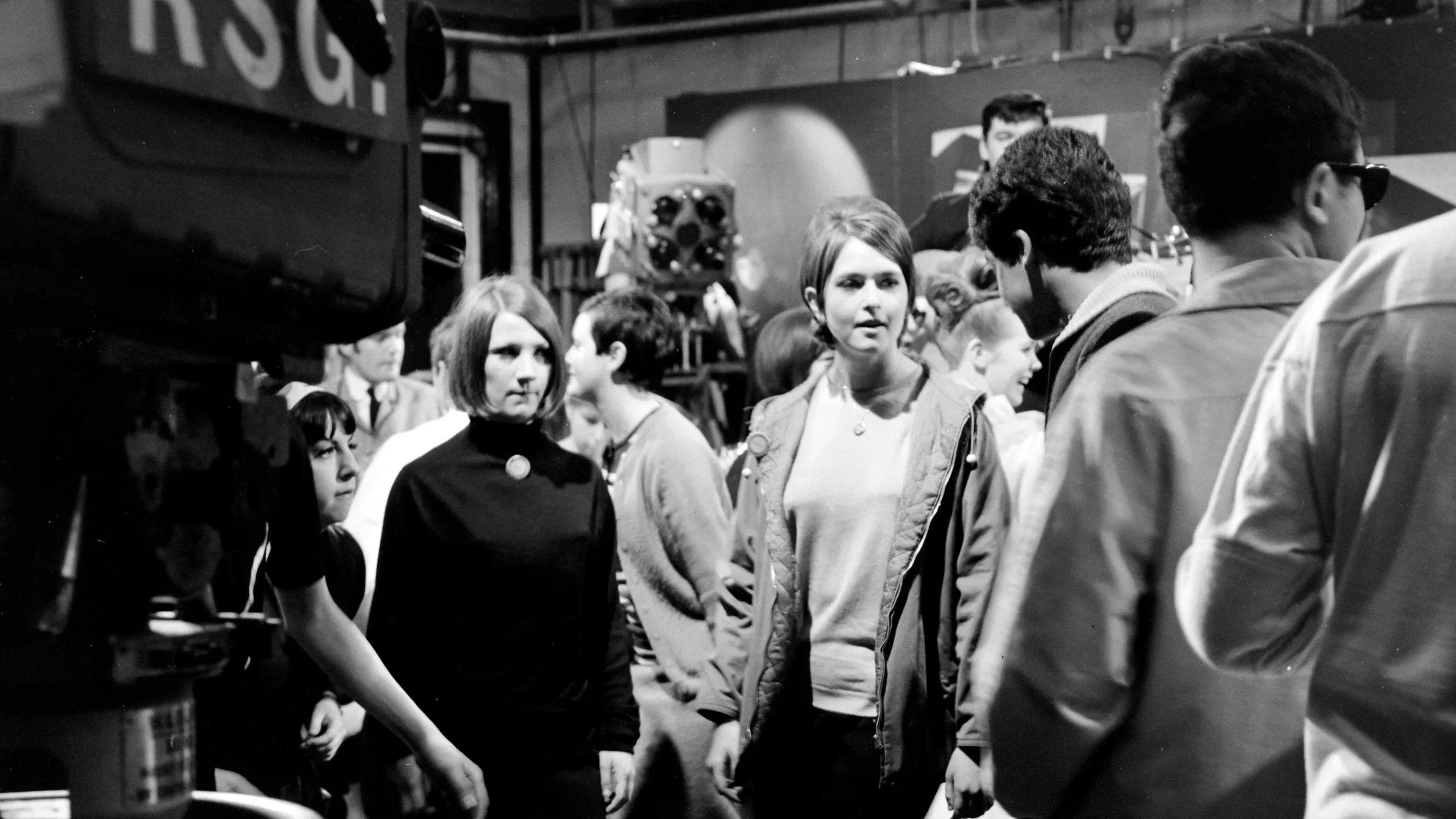
Charmingly chaotic
Evenings on set had an element of chaos to them. “We never got it right,” reflected the show’s editor Vicki Wickham in 2013. “Every week a camera would mow down a dancer or someone would miss their cue. But because the show was live, it was an absolute must-see.” Ready Steady Go! had a spontaneous and unrehearsed feel to it – but that was all part of its appeal.

In direct competition with Top of the Pops
In January 1964, the BBC launched its rival pop music show, Top of the Pops. Ready Steady Go!’s laser focus on beat music and mod culture began to fall out of fashion, and the show wound up in 1966. The more predictable and slickly produced Top of the Pops outlived it by 40 years.

